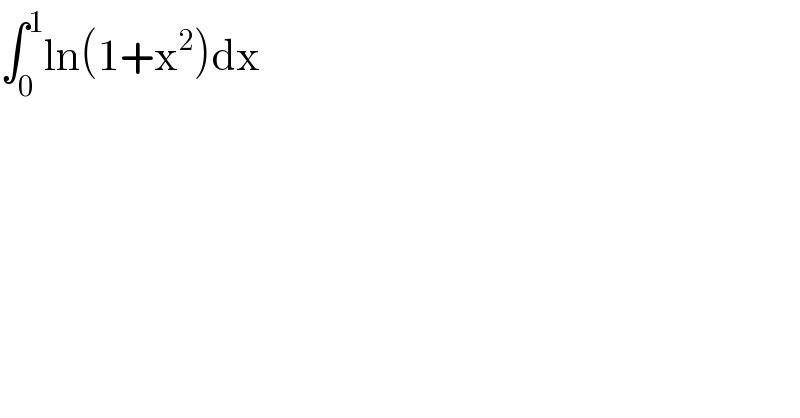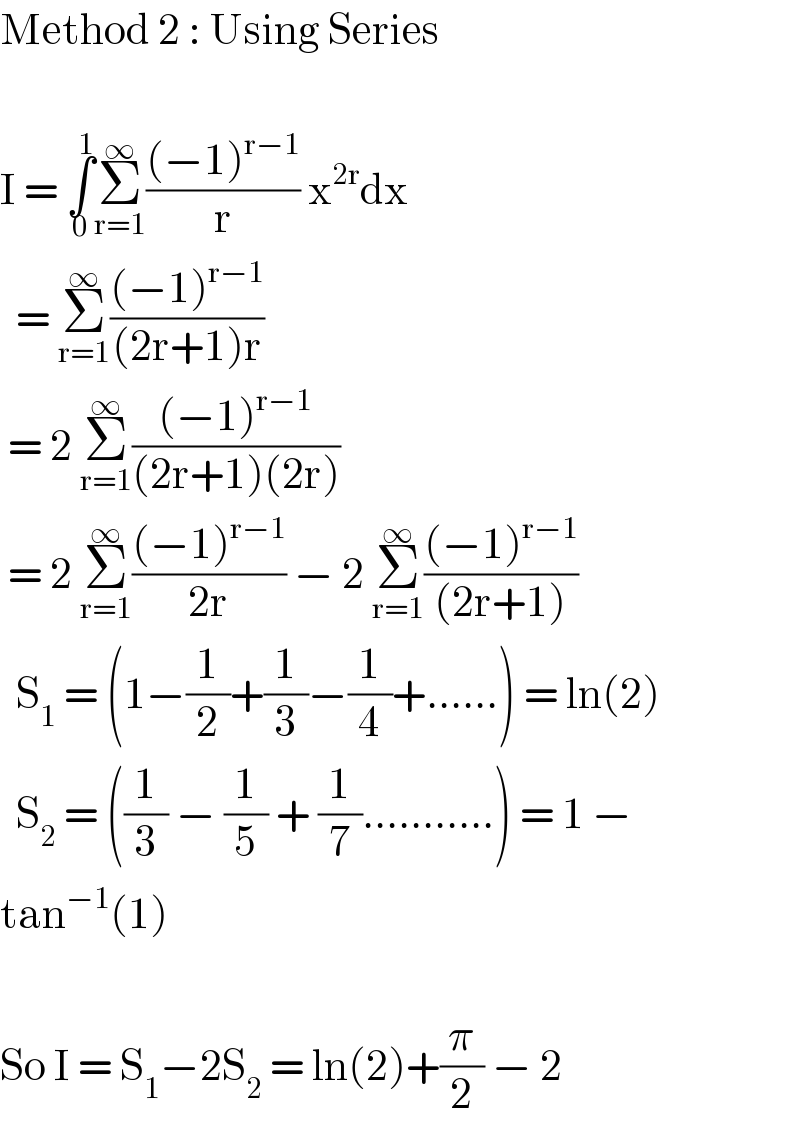
Question and Answers Forum
Question Number 107790 by Ar Brandon last updated on 12/Aug/20

Commented by prakash jain last updated on 12/Aug/20

Commented by mohammad17 last updated on 12/Aug/20

Commented by mohammad17 last updated on 12/Aug/20
![{ ((u=ln(1+x^2 )⇒u^′ =((2x)/(1+x^2 ))dx)),((v^′ =dx⇒v=x)) :} I=[xln(1+x^2 )]_0 ^1 −2∫_0 ^( 1) ((x^2 +1−1)/(1+x^2 ))dx I=[xln(1+x^2 )]_0 ^1 −[2x]_0 ^1 +[2tan^(−1) (x)]_0 ^1 I=ln(2)−2+(π/2) by: mss:Mohammad taha](Q107803.png)
Commented by Ar Brandon last updated on 12/Aug/20
Thanks Sir
Commented by Ar Brandon last updated on 12/Aug/20
Thank you
Answered by mathmax by abdo last updated on 12/Aug/20
![I =∫_0 ^1 ln(1+x^2 )dx by parts I=[xln(1+x^2 )]_0 ^1 −∫_0 ^1 x.((2x)/(1+x^2 ))dx =ln(2)−2 ∫_0 ^1 ((1+x^2 −1)/(1+x^2 ))dx =ln(2)−2 +2 ∫_0 ^1 (dx/(1+x^2 )) =ln(2)−2 +2[arctanx]_0 ^1 =ln(2)−2+2((π/4)) ⇒ I =ln(2)−2 +(π/2)](Q107802.png)
Commented by Ar Brandon last updated on 12/Aug/20
Merci monsieur��
Commented by mathmax by abdo last updated on 13/Aug/20

Answered by hgrocks last updated on 12/Aug/20

Answered by Dwaipayan Shikari last updated on 12/Aug/20
![[xlog(1+x^2 )]_0 ^1 −2∫_0 ^1 (x^2 /(1+x^2 )) log(2)−2∫_0 ^1 1−(1/(1+x^2 )) log(2)−2+(π/2)](Q107808.png)
Commented by Ar Brandon last updated on 12/Aug/20
Hi ���� Thanks
Commented by Dwaipayan Shikari last updated on 12/Aug/20
����
Answered by hgrocks last updated on 12/Aug/20

Commented by Ar Brandon last updated on 12/Aug/20
Brilliant ! Redmiiuser��
